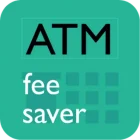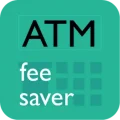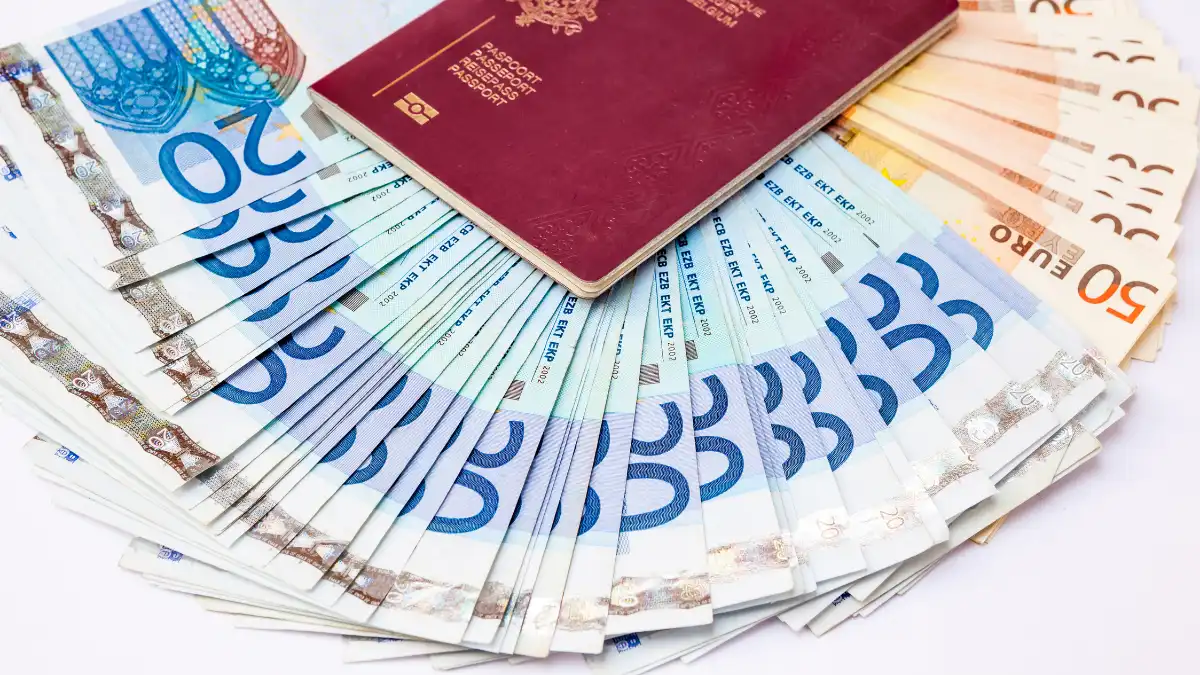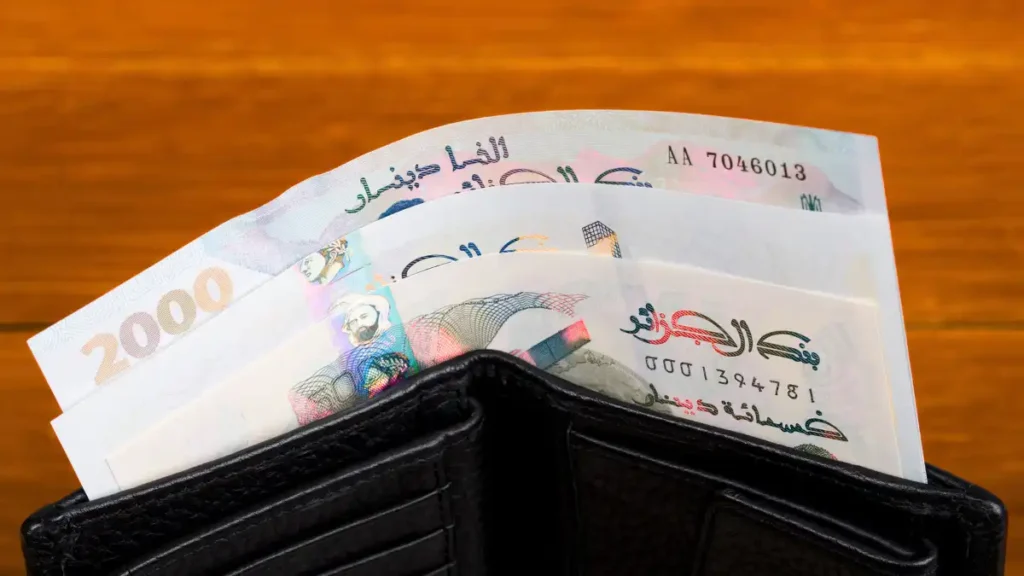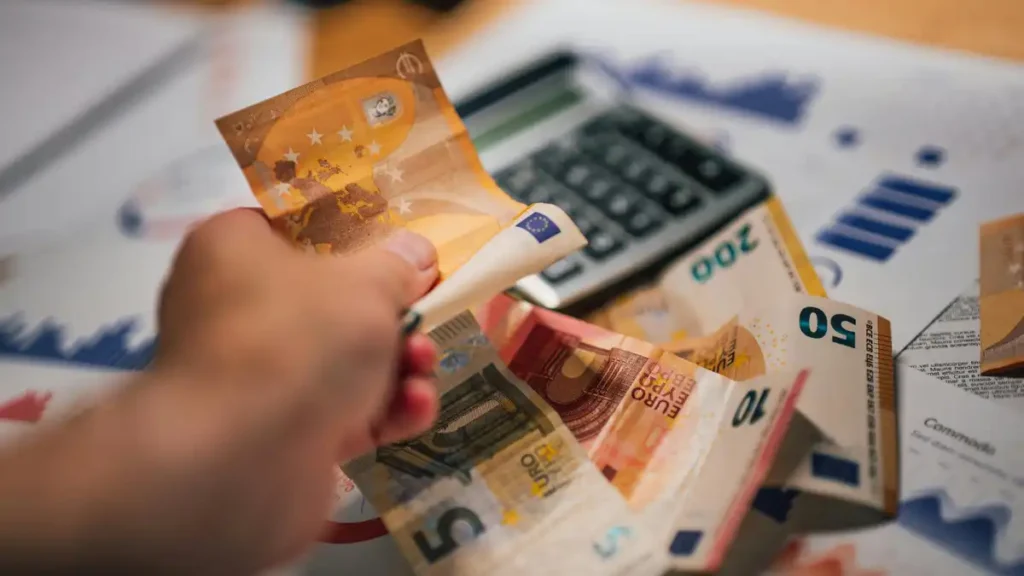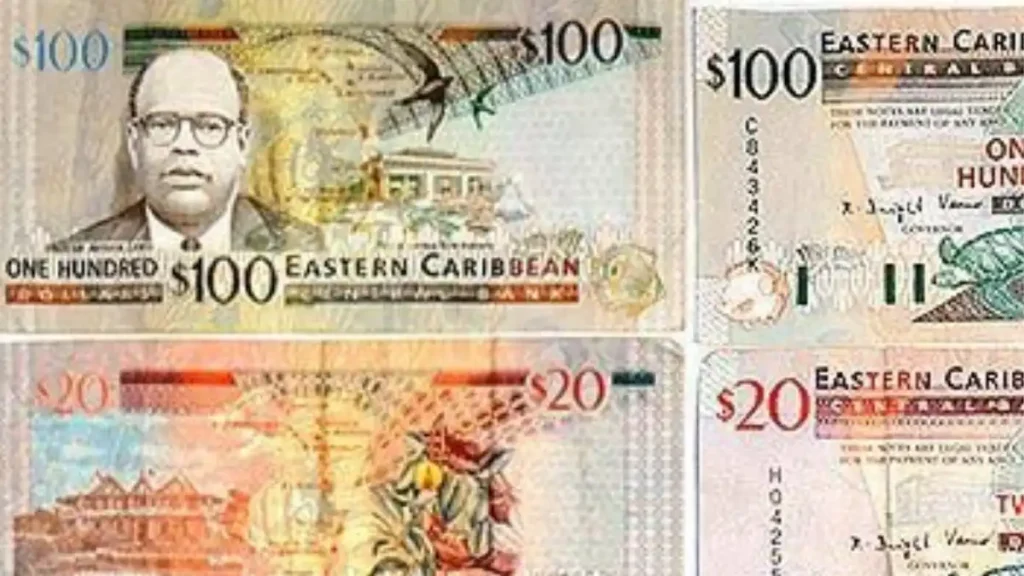From waffles and chocolates to medieval towns and art-nouveau architecture, Belgium offers plenty-but handling money in Belgium smartly can make the journey even better. Currency in Belgium is the Euro (EUR), and cards are widely used in cities, but some small businesses and public toilets may still prefer cash. This guide explains what currency to carry, how to access Euros easily, the best ways to exchange or withdraw cash, and essential safety and etiquette tips-so you navigate Belgian payments like a pro.
How to pay in Belgium – cash or card?
Card is widely accepted. Foreigners use cards for the majority of transactions, with an estimated 70-80% being cashless.
You can use cash for:
- Tips and gratuities (modest cash tips at restaurants and cafés)
- Street food (like waffles, frites, or food trucks)
- Small purchases
- Local expenses at grocery stores, street vendors
- Mobile SIM and phone top-up (in convenience shops)Laundry services (coin laundromats)
You can use card for:
- Budget hotels
- Hostels
- 4 and 5 star hotels
- Local and large tour operators
- Shopping at malls and high-street stores
- Entry fees to museums, historical sites, castles
- Local buses (STIB/MIVB, De Lijn – contactless accepted)
- Local trains (SNCB – online or vending machine)
- Airport transport (Brussels Airport Express, taxis)
- Sit-down restaurants
- Upscale restaurants
- Online bookings for upscale hotels, flights, tours
- Spas
- Tailoring services
- Vehicle renting
- Local taxis / App-based taxis (Uber in major cities)
- Nightlife / bars
- Emergency medical clinics / pharmacies
Card is the norm in Belgium, but having small change is still useful for tipping or outdoor market stalls.
What’s the best currency to take to Belgium?
Belgium mainly accepts its local currency Euros (EUR or €). Note denominations are € 5, 10, 20, 50, 100, 200, and 500. Other currencies are not usually accepted.
US Dollar: Some resorts, hotels and local shops that quote prices in US Dollar. But if you pay in US Dollar and not in Euro, exchange rate in these payments will be poor. So pay in Euro unless you like losing a lot of money!
So, Euro is the best currency to take to Belgium.
Where to get the local currency in Belgium?
In Belgium, you can get the local currency in 3 ways. These are:
ATMs, or
Currency exchange
Money transfer and local pick-up
Types of cards to swipe in Belgium
Visa and Mastercard transactions are commonly accepted for swiping. You might also find some places that accept Amex and other cards, albeit less frequently.
Types of cards at ATMs in Belgium
When withdrawing money in Belgium, majority of the ATMs will accept Visa, Mastercard, Cirrus, Plus, Maestro, and Amex cards. Others such as Diners, Discover, JCB, UnionPay, Rupay are not usually accepted by many ATMs.
Should I exchange money before travelling to Belgium?
If you’re arriving from another Eurozone country, there’s no need to exchange currency-Belgium uses the Euro (EUR). If you’re coming from a non-Euro country, it’s smart to bring a small amount of EUR for immediate use such as public transport or snacks.
ATMs are widespread in Belgium-including at Brussels Airport, train stations, and in cities like Brussels, Bruges, and Antwerp. They accept Visa, Mastercard, Cirrus, Plus, and Maestro cards. Be sure to decline Dynamic Currency Conversion (DCC) and choose to be charged in EUR to get a better exchange rate.
Currency exchange bureaus and banks are available in major cities, though rates at airports or hotels may be less favorable. It’s often more cost-effective to withdraw from an ATM or use a prepaid travel card.
Cards are widely accepted throughout Belgium, including contactless payments. However, in rural areas, markets, or smaller businesses, cash may still be required. Having a mix of cash and cards is ideal.
Where to withdraw money in Belgium
The best ATMs for foreigners to use in Belgium are those owned by popular banks such as:
- Bancontact (a network of ATMs owned by 4 Belgium banks)
- KBC
- Argenta
- Belfius
- Beobank
- ING
There are other banks with ATMs that also accept international debit and credit cards.
For a detailed guide, read Cash and ATMs in Belgium.
Discover fee-free and low-fee ATMs on the ATM Fee Saver mobile app for iOS and Android. This app provides ATM PINs and details of leading bank ATMs such as ATM fees and withdrawal limits for foreign cardholders at ATMs in Belgium. Moreover, its simple fee calculator helps you determine exact withdrawal charges. You can also find cash tips and tricks on the app for 160+ countries including Belgium.
Download now from the App Store or Play Store.
Where to exchange currency in Belgium
In Belgium, you can exchange currency at authorised currency exchanges, banks, airports, and hotels, the most popular being authorised currency exchanges.
In Belgium, especially in Brussels, Antwerp, and Bruges, you’ll find several currency exchange offices in city centers and transport hubs.
- Notable currency exchanges are:
Carrefour Change
Mira Exchange
Change Currency Exchange (multiple locations in Brussels)
Western Union branches also often offer exchange services
Forex Bank
Best locations:
Near Brussels Central Station and Rue du Midi
Inside train stations and near Grand Place
At major malls and commercial streets
- Banks Offering Currency Exchange:
BNP Paribas Fortis
ING Belgium
KBC Bank
Belfius Bank
Bank rates are often less competitive, and many require you to have an account. Not all branches carry all currencies.
💡 Tip: EUR is the local currency. If exchanging USD, GBP, or other major currencies, it’s best to do so at city center exchange offices for better walk-in rates.
Pro-tips:
Stay away from airport exchanges – Poor rates
Avoid the black market – Be wary of being conned.
Include fresh notes – If your notes are damaged or dirty, you can expect to pay more or less.
Is carrying money in Belgium safe?
Belgium experiences rare instances of mugging, threats, or robberies, so carrying cash is usually safe. However, take these precautions:
Some safety tips for carrying cash while travelling in Belgium are:
- Carry only the cash you need.
- Do not keep all the cash in one pocket or wallet.
- Put some cash in a safety belt or fanny pack.
- Do not flash your cash.
- When paying, do not remove or display your entire cash.
- Keep wallets preferably in front pockets.
- Cross-wear your purses if possible.
- Hold your purses, wallets and bags close and tight on crowded streets and in public trains and buses.
- When withdrawing cash, keep the cash low while you count it so people around don’t see it.
- If you’re dining alone, don’t leave your wallet / bag unattented while you go to the restroom.
- If sitting outdoors in a restaurant, don’t leave your wallets / bags on the table.
Is it better to use debit or credit cards or pay by cash in Belgium
Use a card if it is fee-free i.e. your bank does not charge any fees to swipe the card, when the merchant / POS also does not impose any extra charge to use a card, you need to use the insurance of the card, don’t want to block cash of large purchases and card’s swipe fees are lower than withdrawal fees.
Pay by cash by withdrawing cash from ATM or exchanging currency where – fees on ATM withdrawals are lesser than fees on swiping cards, you don’t want to leave any digital footprint of your expenses, it is convenient and easier to conduct transactions.
